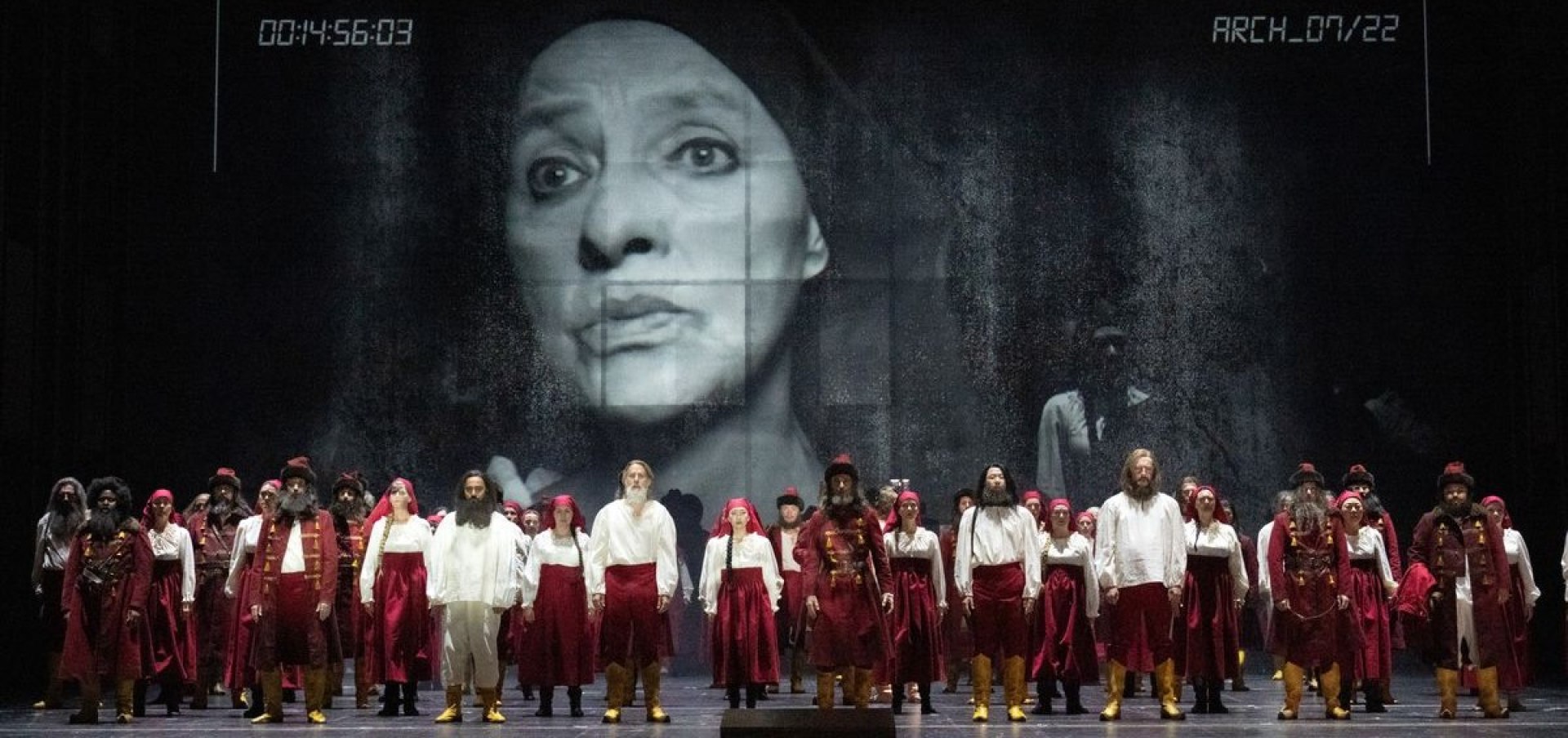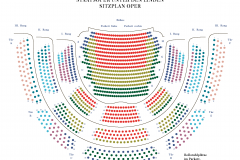Khovanshchina
November 2025 | ||||||
|---|---|---|---|---|---|---|
Mo | Tu | We | Th | Fr | Sa | Su |
Khovanshchina
A national music drama in five acts (1886)
Music and text by Modest Mussorgsky
In Dmitri Schostakowitsch's version with Igor Stravinsky’s finale
Duration: approx. 3 hours 30 minutes, including one interval
Language: Russian, with German and English surtitles
Recommended age: 15 years and older
Modest Mussorgsky’s national folk drama centres on a grim episode of late 17th-century Russian history. Ivan Khovansky, leader of the musketeer corps (streltsy), and his son Andrei, are planning a conspiracy, but the ambitious Prince Vasily Golitsyn, the boyar Shaklovity and cleric Dosifey also get involved in the struggle for power.
While still working on Boris Godunow, the composer Modest Mussorgsky began to think about a new opera project in 1872. Inspired by the writer Vladimir Stasov, he began to read intensively about the circumstances of the Streltsy Uprising against Tsar Peter I and Sofia Alekseyevna. "I revel in collecting material, my head glows like a kettle that is constantly being replenished," Mussorgsky wrote to his librettist Stasov. In many places, the composer deviated from historical accuracy to create new dramaturgical connections and contrast the political drama with the sphere of personal, amorous entanglements.
Mussorgsky was unable to complete the score before his death in 1881. Owing to Nikolai Rimsky-Korsakov’s intervention, who not only orchestrated the work but also deleted or thoroughly reworked large sections, Khovanshchina was performed years later. It was not until the early 1930s that a piano version of the original score was published, which also formed the basis for the newly-instrumented version of Claus Guth’s production under the musical direction of Vladimir Jurowski.
Program and cast
Musical Director: Timur Zangiev
Director: Claus Guth
Set Design: Christian Schmidt
Costumes: Ursula Kudrna
Lighting: Olaf Freese
Choreography: Sommer Ulrickson
Video: Roland Horvath
Live Camera: Jan Speckenbach, Marlene Blumert
Chorus Master: Dani Juris
Prince Ivan Khovansky: Mika Kares
Prince Andrei Khovansky: Andreas Schager
Prince Vasily Golitsyn: Stephan Rügamer
Boyar Shaklovity: George Gagnidze
Dosifey: Taras Shtonda
Marfa: Marina Prudenskaya
Emma: Evelin Novak
Scribe: Andrei Popov
Susanna: Anna Samuil
Warsonofjew: Roman Trekel
Kuska: Álvaro Diana
Streshnev: Johan Krogius
Two Streltsy: Hanseong Yun, Friedrich Hamel
Staatsopernchor, Children’s Choir of the State Opera, Staatskapelle Berlin
State Opera Unter den Linden
Staatsoper Unter den Linden is one of Berlin's most prestigious opera houses, with a rich history and significant cultural impact.
History:
The Staatsoper Unter den Linden was originally built between 1741 and 1743, under the direction of architect Georg Wenzeslaus von Knobelsdorff. It was commissioned by Frederick II of Prussia and was initially named the Königliche Oper (Royal Opera). The opera house has undergone several renovations and reconstructions, notably after World War II damage. It reopened in 1984, following a major renovation.
Construction:
The original design was characterized by its Baroque style, featuring an elegant façade and a grand entrance. The building was reconstructed in the 1950s and 1980s, maintaining its classical exterior while modernizing the interior. The façade features a classic portico with six Corinthian columns and a prominent central pediment.
Interior:
The interior is known for its opulent and classical design. The auditorium is renowned for its acoustics and grandeur, with luxurious velvet seats and elaborate decorations. The stage and seating areas have been updated to meet modern performance standards while preserving historical aesthetics.
Concerts and Performances:
The Staatsoper Unter den Linden hosts a variety of performances, including operas, orchestral concerts, and ballet. It is home to the Staatskapelle Berlin, one of Germany's leading orchestras. The opera house is celebrated for its high-quality productions and its role in Berlin’s vibrant cultural scene.
JOURNEY
The Staatsoper Unter den Linden has completely barrier-free access due to its excellent public transport connections.
ADDRESS: Unter den Linden 7; 10117 Berlin
SUBURBAN RAILWAY
S+U Friedrichstraße (S1, S2, S5, S7, S25, S75)
SUBWAY
Hausvogteiplatz (U2)
Museumsinsel (U5)
Stadtmitte (U2, U6)
Unter den Linden (U5, U6)
BUS
Staatsoper (100, 245, 300)
Unter den Linden/Friedrichstraße (100, 147, 245, 300, N6)
PARKING
Q-PARK parking garage Unter den Linden/Staatsoper
Bebelplatz, 10117 Berlin
There are five electric charging stations in the parking garage. Further information can be found here.
The underground car park on Bebelplatz offers disabled parking spaces and direct access to the opera house. On entering the car park between 5.30pm and 11.30pm, the maximum parking fee is €7. To use this tariff, enter your parking ticket in one of the pay machines and the message »Theatertarif« will appear on the display. Please note that it is not possible to use the tariff if you enter the car park before 5.30pm. so it will not be shown on the display. TIP: If you pay the theatre tariff at the pay machine before the event, you can avoid unnecessary waiting after the show.

 EN
EN DE
DE IT
IT FR
FR ES
ES RU
RU JP
JP RO
RO
 Seating plan
Seating plan 